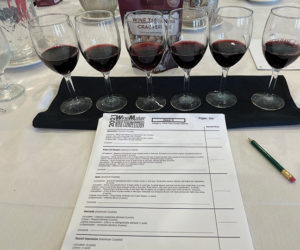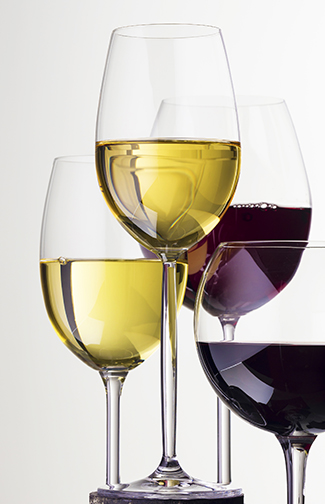
As amateur winemakers, we are always striving to make our wine better. One of the best ways I’ve found to do that is through entering amateur wine competitions that provide valuable feedback in the judges’ notes. The more competitions a wine is entered into, the more data and varied opinions you receive about your wine. The wine competitions also give you a “grade” in the form of medals or ribbons. If you use the results correctly, your wine quality should improve quickly.
I normally enter my wines into four competitions a year — two on the West Coast and two on the East Coast, and have done so for the past 15 years. I usually enter 6–15 wines per competition. The number of entries depends on how many different wines I produced, the maximum number of entries allowed, and if I made significant changes to improve a particular wine. I never miss the California State Fair Home Wine Competition and the WineMaker International Amateur Wine Competition. While the notes may differ, there is usually a common theme in the comments that is extremely valuable.
The judges’ scoring sheet notes are my favorite part of the competitions. I’ve found it extremely valuable to receive the opinions on the quality of my wines from judges competent in what constitutes a good wine after they critically taste and honestly assess my entries. If the notes indicate an area that needs correction, I know what needs work for the next batch. Occasionally you may receive conflicting judge’s notes about your wine. This happens, after all the judges are human and all have their personal biases. The conflicting notes are why I enter four amateur contests per year. The same wine entered in four competitions yields at least 12 judges’ notes. The notes may range from, “This is the best wine I’ve ever tasted,” to “The wine has few remarkable features.” But more often, there is a common theme in the notes. If that theme indicates there is a flaw in need of correction, then make your best attempt at doing so in the future (fortunately, you’ve already found WineMaker magazine, so there’s sure to be an article about fixing that flaw in their archives).
I think of the medals as my report card. Gold is an “A,” silver is a “B,” etc. While each wine is judged “side-by-side” with others in the same category, the judges do not compare your wine to the others when awarding medals. After all of the wines have been judged on their individual merits and scores recorded, the top wines in each category are compared to determine some variation of “Best of Varietal,” “Best of Class,” and “Grand Champion.”
The biggest mistake an amateur winemaker makes at competitions is comparing their “medal count” to other winemakers. Don’t fret over being in competition with a winemaker that grows their own grapes, makes their wine from a kit, or can afford grapes at $8,000 a ton. The comparison will only take the joy out of making your wine. You are only in competition with yourself for the medals.
The progress you make year-over-year on the quality of your wine should be your goal. The judges’ scoring sheet notes obtained by entering several competitions is the best resource for achieving that progress.
Winemaking is about having fun. Enjoy the journey from good wine to great wine. And save me a glass.






